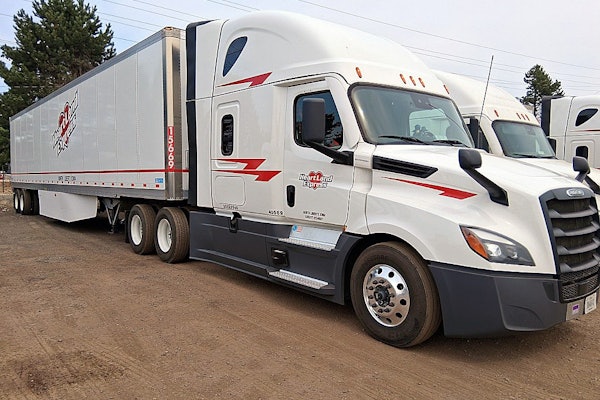Kenneth Dewitt is a CPA and certified financial planner who serves as a part-time chief financial officer for a variety of businesses, including trucking companies.
E-mail [email protected].
An excellent carrier I work with can generate a full set of financial statements within hours of the month’s end. They can even do it weekly or daily if they want. This is remarkable and is because of excellent software and disciplined and driven management.
OK, so you can generate a profit-and-loss statement at a moment’s notice. What does the P&L really tell you about how to run your business or how to improve your profits? Not much, really. Although swift and timely financials are critical, aggressive business owners want more information than they typically disclose.
A basic P&L reports sales or revenues, then deducts variable expenses, fixed overhead (or general and administrative expenses) and finally other income or expense before arriving at net profit or loss. Most P&Ls also show the current month, the percentage of sales and the same information for the year to date. Perhaps there is budget information, too, and maybe even cost per mile.
Most people recognize the limitations of traditional monthly financial statements and prepare various supplementary “operating reports.” For trucking companies, this might include reports on miles loaded versus budget, segment information by company drivers and owner-operators, revenue per mile averages and other pertinent numbers.
But the P&L’s limitations don’t mean that the report itself is flawed. Indeed, the very purpose of a P&L is to pull together and report the overall results of operations in a summary format. It is designed to score your decisions from last month and, perhaps, two to six months earlier.
Larger companies employ CFOs or controllers, who break the basic P&L down into more useful segments. Bookkeepers and accountants may not have such training, but perhaps they should. A true analyst can take a monthly P&L, find the key breakout numbers and plot them in a trend report on a spreadsheet. They might focus on drivers, owner-operators or terminals. Or they might create P&Ls by business segment, such as truckload or LTL.
Regardless of how you break the numbers down, make sure they reconcile. The sum of your detailed data must equal the full companywide P&L. If your operating reports and segment P&Ls use different time periods, you can never be sure you are really analyzing the full picture.
Determining relationships between numbers and combining operating statistics are key tools a financial analyst uses when looking at company profitability. When you plot these over time, perhaps they can point out why one month was good and another was bad. A picture then emerges as to what you must do to post consistently good results.
As you analyze segments, revenue and cost drivers become apparent. Operational reports and strategic metrics can then be devised to measure the revenue and cost drivers, and report on them. Once profitable ranges are noted, goals for these metrics can be established and communicated.
For example, suppose you find that $2,500 revenue per truck per week is necessary for an “average” truck to return a reasonable profit. Your combined P&L and analysis reports should compute that average for you, and tell you how many trucks “made it.” If you see the per-truck average dropping, look at internal benchmarking of the numbers by truck. Then you can focus on the “best practices” of the good ones to improve the bad ones. You can develop company incentive plans to encourage each employee to reach those goals.
For trucking, other key performance indicators might relate to marketing, safety, driver turnover, customer service and cost control per truck.
If you then add segments of your reports that focus on other key objectives or “profit-drivers,” you are well on your way to having a tool that supports your decisions and drives your company to profits.
Resources:
CCH Business Owner’s Toolkit: “Managing Your Business Finances, including how to analyze your current financial position. Online article with excellent series of links to more info at www.toolkit.cch.com/text/P06_0100.asp









